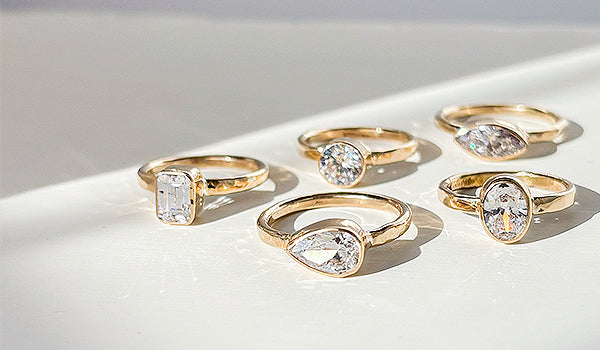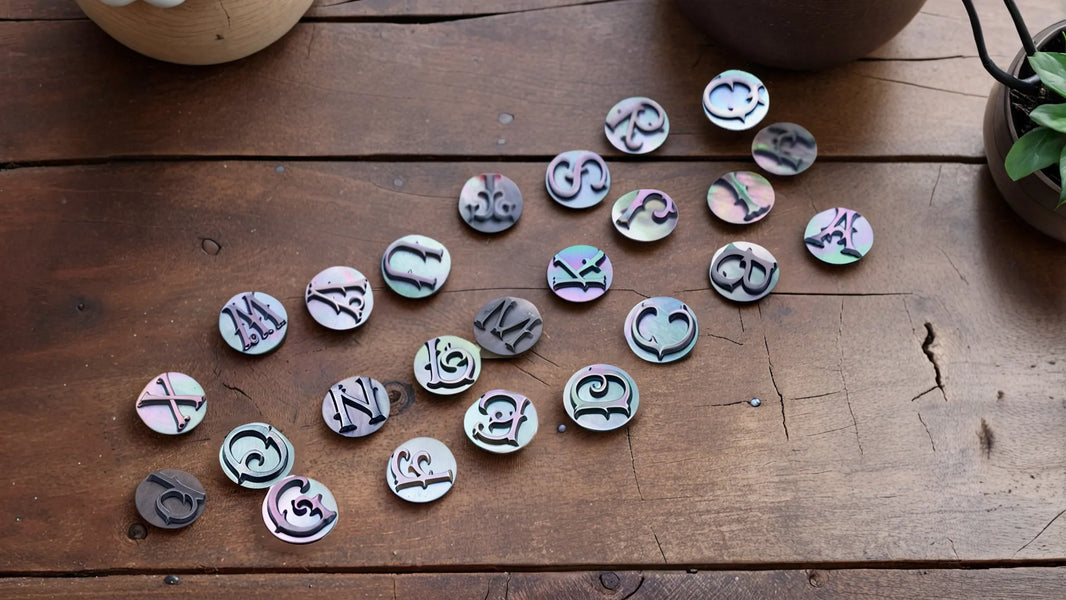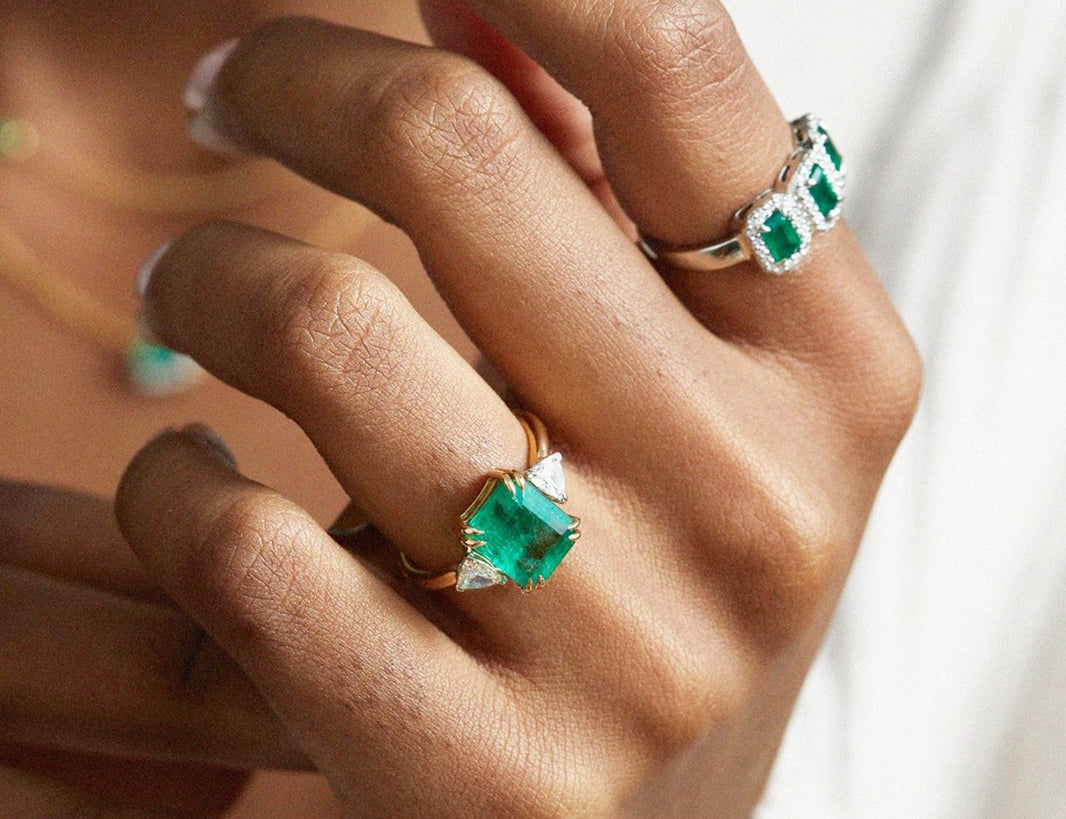There is a particular satisfaction in a gemstone that meets real life where it actually happens: at the kitchen sink, on the hiking trail, at the office desk where you gesture through a story and watch the facets catch late‑day light. Moissanite has earned that place not by accident but by design. Lab‑created silicon carbide, honed for optical performance and durability, is now a mainstay in engagement rings precisely because it answers the question so many couples ask with a practical yes: can this ring last?
This guide distills what matters about moissanite longevity—what the stone is, how it wears, where it excels, where it needs your help, and how to buy for decades of daily life. It draws on technical guidance from institutions such as GIA and reputable brand education from Charles & Colvard and Brilliant Earth, along with hands‑on care practices that jewelers, restorers, and owners rely on every week.
What Moissanite Is—and Why It Endures
Moissanite is monocrystalline silicon carbide. In gem terms, that composition puts it among the hardest and most stable stones used in everyday jewelry. On the Mohs scale of scratch resistance, moissanite generally sits around 9 to 9.5, close to diamond at 10 and ahead of sapphire and ruby at 9. This is not marketing—it is materials science, and it’s the foundation of its longevity in daily wear. GIA’s literature also notes moissanite’s distinctive optics: a high refractive index around 2.65–2.69 and dispersion near 0.104, which together produce a clear, lively sparkle with more rainbow “fire” than diamond’s ~0.044.
Because gem‑quality moissanite is grown in laboratories, its color and clarity are engineered to be stable. Reputable makers such as Charles & Colvard emphasize colorless and near‑colorless ranges, and buying from a known source sharply reduces the odds of receiving misrepresented material. The result is a stone that resists scratching, holds its optical properties, and—crucially—does not internally “cloud” with age.
The Real Meaning of “Lasts Forever”
When people ask if moissanite “lasts forever,” they usually mean: will the ring still look bright, stay intact, and keep its stone secure after years of wear? For the gemstone itself, the answer is yes under normal conditions. The stone is non‑porous and chemically stable, so it does not absorb oils or moisture. Any dullness you notice over time is typically a removable film on the surface—oils, soap residue, hard‑water minerals—not a change within the crystal. Care guides from Esdomera, Felicegals, TOVAA, and Goldenbird all converge here: clean the ring regularly and the original brilliance returns.
A ring, however, is a system. Prongs wear, white gold needs periodic rhodium replating, and sterling silver can tarnish. The gemstone resists scratches better than most alternatives, but the metalwork still needs routine attention. That distinction—stone versus setting—is the key to understanding moissanite’s longevity in the real world.
Hardness, Toughness, and Everyday Wear
Hardness is resistance to scratching; toughness is resistance to breaking or chipping. Moissanite scores very high on hardness, which is why keys, countertops, and sand in daily life rarely mark it. Toughness is also excellent. While no gemstone is indestructible, many jewelers consider moissanite relatively resilient against chips in normal wear, particularly when the cut spreads stress well and the setting protects exposed edges.
Some retailers go further and claim moissanite chips less often than diamond in drop tests, citing reduced brittleness. The idea is plausible—silicon carbide has favorable fracture behavior compared with diamond’s cleavage—but public, peer‑reviewed data are limited. If this matters to you, ask your jeweler for documented fracture‑toughness figures for the exact brand and compare them with published values from GIA or similar laboratories.

Heat, Repairs, and Extreme Events
Moissanite’s thermal stamina is impressive. Gema&Co notes a melting point near 4,946 °F and points out that the stone tolerates a jeweler’s torch during resizing or repairs. They also note a temporary color shift under heat that returns to normal on cooling, which seasoned bench jewelers recognize as typical for silicon carbide. Some brand blogs claim the stone can withstand up to about 2,000 °F and even survive typical house‑fire temperatures near 1,100 °F; meanwhile, other sources mention that diamond can oxidize or “cloud” near about 1,600 °F. The disparities arise because different claims refer to different thresholds—melting versus oxidation, short exposure versus prolonged heat, and whether the comparison includes the behavior of the metal setting or only the stone. To verify, consult your jeweler before any heat work, and ask your insurer how they treat gemstone survival in fire claims.
The practical takeaway is simple. Moissanite can be heated safely for most standard bench work; competent jewelers handle it routinely. But extreme, uncontrolled heat is still dangerous to the ring as a whole. Prongs can anneal, white gold plating can degrade, and accent stones or adhesives (in non‑mechanical settings) may fail even if the center stone survives.
Cloudiness, Tarnish, and the “Oil Slick” Stories
Modern moissanite does not permanently cloud under normal wear. Dulling almost always traces to surface film: lotions, detergents, and mineral deposits. Esdomera, TOVAA, Lahela, and Goldenbird all recommend the same fix: soak the ring in warm water with a drop of mild dish soap, gently brush with a soft toothbrush—especially behind the stone—rinse well, and dry with a lint‑free cloth. If your life involves daily lotion or sunscreen, a quick clean every week preserves that just‑set sparkle. Ultrasonic and steam cleaning are generally fine for the stone, but settings with many small side stones can loosen in aggressive cleaning; when in doubt, have the jeweler do it.
You may have heard about an “oil slick” film that looks like rainbow stain. Some retailers suggest this was tied to older manufacturing runs and that modern 4H‑SiC growth has mitigated it. If you encounter a persistent film that home cleaning cannot lift, ask a jeweler to inspect under magnification and remove residue professionally; request the manufacturer’s written care guidance for your exact stone.
Tarnish concerns typically involve the metal, not the stone. Sterling silver will tarnish; lower‑karat gold alloys can dull; platinum does not tarnish but develops a satiny patina. If minimal maintenance is your goal, consider platinum or higher‑karat gold and plan for a routine metal polish during annual inspections.

How Moissanite Holds Up in Daily Life
With the stone’s hardness and stability, daily wear is realistic. The smart moves are about impacts and buildup. Remove your ring for heavy lifting, yardwork, contact sports, and abrasive tasks. Put it on after lotions, hair products, and sunscreen. If you swim frequently in chlorinated pools or the ocean, leave it on shore; chlorine and salt are harder on metal than on moissanite, and sudden temperature changes are unkind to settings.
At home, a thirty‑minute soap‑and‑warm‑water soak followed by a careful, soft‑bristle brush keeps both the pavilion and setting free of film. Many brand care pages, from Felicegals to Lahela and Nooi, outline this exact procedure. Once or twice a year, schedule a professional clean and inspection. A jeweler will tighten prongs, check for band wear, and deep‑clean the under‑gallery. This is the difference between a ring that “lasts forever” in theory and a ring that stays secure and brilliant in real life.
Buying for Longevity: What Matters Most
Start with cut quality and stone grade. Well‑cut moissanite returns light efficiently and also manages stress better at facet junctions. Seek near‑colorless or colorless grades if you prefer a bright white appearance; Charles & Colvard’s education pages describe their DEF “Forever One” line as an example, and retailers like Brilliant Earth explain how cut and size influence perceived color and fire.
Then choose a setting that suits your lifestyle. Bezel, halo, and robust six‑prong designs place more material between the world and the stone’s edges, which reduces the chance of edge chips from sharp impacts. High cathedral and tension designs look dramatic but leave more of the girdle exposed, so active wearers may prefer lower‑profile, more protective silhouettes.
Confirm your care ecosystem before you buy. Ask what the brand’s warranty covers—some, like TOVAA, explicitly warrant optical properties such as color and clarity stability for the original purchaser. Clarify the schedule for rhodium replating if you choose white gold, and ask about complimentary cleanings, prong tightening, and resizing. Over the long arc of a ring’s life, that service support matters more than one extra point of brilliance.
Finally, understand testing and disclosure. Because moissanite is a strong thermal conductor, standard diamond thermal testers can misread it as diamond. GIA recommends using dedicated moissanite testers or multi‑testers and combining that with simple observations such as facet doubling under a 10× loupe. When the value is high, independent lab reports and jeweler verification are prudent.

Pros and Cons for the Long Haul
Longevity is where moissanite often shines brightest. The stone’s scratch resistance, chemical stability, and non‑porous surface mean decades of daily wear with regular cleaning, and the optical performance is unabated by age. The value proposition is compelling: you can allocate more of the budget to craftsmanship, metal quality, or a more protective setting rather than chasing the last increment of peak hardness.
The trade‑offs are aesthetic and cultural rather than structural. Moissanite’s stronger rainbow fire is a delight to many and a tell to some purists; Keyzar’s contrarian take notes that the very brilliance some adore can read as “too much” if you want the icy restraint of a top diamond. Certain lighting makes moissanite’s character more vivid as stone size increases; Brilliant Earth’s buying guide acknowledges this and suggests viewing stones in multiple environments. Resale dynamics also differ across gemstones and brands, but that’s a question of markets, not longevity.

How Moissanite Compares at a Glance
Property |
Moissanite (SiC) |
Diamond |
Cubic Zirconia |
Mohs hardness (scratch resistance) |
~9–9.5 (high) |
10 (highest) |
~8.5 (lower) |
Optical fire character |
Higher dispersion; more rainbow flashes |
Lower dispersion; whiter scintillation |
Lower brilliance than both |
Refractive index (brilliance) |
~2.65–2.69 |
~2.42 |
Lower than moissanite |
Tester behavior |
Thermal testers can misread; use multi‑testers |
Thermal testers positive |
Distinct electrical/thermal profile |
Figures for hardness, refractive index, and dispersion reflect gem‑trade education from GIA, Charles & Colvard, and Brilliant Earth, and the CZ hardness reference aligns with With Clarity’s consumer guide. The tester note echoes GIA’s long‑standing recommendation to combine methods for accurate identification.

Care That Extends a Lifetime
Practical maintenance is blissfully simple. Clean the ring regularly with warm water and mild dish soap. Use a soft toothbrush and make a point to reach behind the stone where oil hides. Rinse thoroughly and dry with a lint‑free cloth. If films persist—particularly the rainbow‑like “oil slick” that some owners report—ask a jeweler to remove residue with professional solutions rather than experimenting with abrasives at home. Vodka wipes and diagonal home hacks do surface in brand blogs, but plain soap and water are the safest default for both moissanite and metalwork.
Save ultrasonic or steam cleaning for professional visits if your setting has delicate pavé or a lot of accent stones; while moissanite itself tolerates these methods, vibrations can loosen tiny stones over time. Treat chlorine, bleach, and strong solvents as enemies of metal. If you must clean with harsh household chemicals, take the ring off or wear gloves. When you store the ring, use a fabric‑lined compartment or soft pouch, and keep it from rubbing against softer gems that it might scratch.

A Note on Conflicting Claims
You will encounter different numbers for heat tolerance and slightly different descriptions of hardness—some brand pages say “around 9” while others emphasize 9.25–9.5. The apparent conflict is usually definitional. Hardness figures for a family of stones reflect averages, measurement method, and rounding; both statements communicate the same practical reality for daily wear. Heat claims vary because some describe melting points, others describe safe working conditions at the bench, and others talk about extreme events like house fires. As with any durable good, your best guardrail is method, not myth: use known‑safe cleaning practices, let a skilled bench jeweler handle heat, and keep an inspection habit.
A related, under‑discussed nuance is how cut engineering and setting design influence durability. Even a very hard stone can chip if a point is left unprotected and meets a sharp blow. Conversely, a low‑profile bezel with a stress‑smart cut can live happily on an avid rock climber’s hand. Most buying guides focus on color and carat, but longevity often hinges on these quieter choices.
Takeaway
Moissanite, as a gemstone, is built to last. It resists scratches, shrugs off common household exposures, and keeps its bright character year after year. A ring’s long life is then a matter of your choices and your habits: a cut that manages stress, a setting that suits your days, a trusted jeweler who tightens prongs and keeps the metal sound, and a simple cleaning routine that restores what daily life leaves behind. In this sense, “forever” is not a promise; it is a practice. Choose well, care well, and moissanite rewards you with durable beauty you can live in.
FAQ
Do moissanite rings really last forever?
For the gemstone, yes in practical terms. Moissanite’s hardness and chemical stability mean it maintains structure and sparkle with routine care. The ring’s metal and setting need ongoing maintenance—polishing, prong checks, and occasional replating for white gold—to keep the whole piece secure over decades. Education from Charles & Colvard and Brilliant Earth supports this view, and jeweler care guides align with it.
Will moissanite scratch or chip in daily wear?
Scratches are rare because moissanite is very hard. Chips are uncommon but possible if a sharp impact hits an exposed edge. Protective settings such as bezels, halos, or robust multi‑prong solitaires lower the risk, and regular inspections catch bent prongs that could expose the girdle. Some retailers suggest moissanite chips less than diamond in drop tests; To verify, ask for documented fracture‑toughness data and compare against GIA references.
Does moissanite get cloudy over time?
No, not internally. Dullness is almost always surface film—oils, soap, hard‑water minerals—that lifts with warm water, mild dish soap, a soft brush, and a thorough rinse. Esdomera, TOVAA, Lahela, Felicegals, Goldenbird, and Nooi all describe this care pattern. If a persistent rainbow‑like film remains, request a professional clean rather than using abrasives.
Is moissanite safe during resizing or repairs?
Yes, in skilled hands. Gema&Co notes that moissanite tolerates a jeweler’s torch and any temporary color shift from heat returns on cooling. Problems during repair usually involve the metal or accent stones, not the moissanite. Always disclose the stone type to your jeweler so they adjust torch work and support accordingly.
Can moissanite survive a house fire?
Some brand education claims moissanite can withstand temperatures typical of house fires and cites very high thermal thresholds, while others mention diamonds can oxidize around about 1,600 °F. The ring’s survival depends on duration, environment, and the metal and setting, not just the stone. Verify with your insurer and ask a jeweler about heat exposure testing for your specific brand.
How does moissanite compare with diamond or cubic zirconia for longevity?
Moissanite and diamond both belong in the top tier for daily‑wear durability, with diamond the hardest and moissanite close behind. Cubic zirconia is softer, so it shows wear more quickly. Optical character differs: moissanite throws more rainbow fire than diamond, which is a preference rather than a quality flaw. With Clarity and Brilliant Earth provide consumer‑friendly comparisons, and GIA details the optical physics behind them.
Sources Mentioned
GIA, Charles & Colvard, Brilliant Earth, Gema&Co, Esdomera, Felicegals, Lahela Jewelry, Goldenbird, Nooi Jewelry, TOVAA, With Clarity, Keyzar Jewelry, Ice Cartel.
References
- https://www.gia.edu/doc/WN97.pdf
- https://www.academia.edu/51434490/Synthetic_Moissanite_A_New_Diamond_Substitute
- https://honors.libraries.psu.edu/files/final_submissions/89
- https://www.gemsociety.org/article/moissanite-vs-diamond/
- https://www.diamondsfactory.com/blog/moissanite-diamond-rings-are-the-perfect-gift-for-international-womens-day
- https://www.doamore.com/diamonds-vs-moissanite/?srsltid=AfmBOooqg_QgvzScjQlO2k440ibmx-1dV9HBBqtnid_oVgR5JdHjwnEk
- https://moissanitebyaurelia.com/how-long-does-moissanite-last/
- https://www.charlesandcolvard.com/blog/enduring-beauty-the-durability-and-longevity-of-a-moissanite-engagement-ring/?srsltid=AfmBOoqz_ckd7JjC_Uve5pZse1kgOX4wBmig3Z-VzcWinXe5OKtMH5MM
- https://diamondrensu.com.au/blogs/engagement-rings/how-to-clean-and-care-for-your-moissanite-ring-diamondrensu?srsltid=AfmBOorTf85hHNhTERShEFNEumXcnk1ASNHobsbNU2UQMbxEHHU9VIea
- https://diamondrensu.com/blogs/what-is-moissanite/is-moissanite-harder-than-a-diamond?srsltid=AfmBOopf7r_lsDywjdYBVvZdjv51jh8nlew0KEgsajMg9fr-A7Gm1fax









